Asia Orchestra Week 2021

Thank you for your visiting. AOW2021 ends it’s video upload as planned due to the contract period with the performers.
AOW2022 Coming Soon! Stay tuned for upload, there is more to come.
The Sponsored Performance at the Reiwa 3 (76th) National Arts Festival, Agency for Cultural
Affairs
Asia Orchestra Week
Emotional Moment after Silence
Harmony for Future
Thank you for your visiting the Sponsored Performance of the National Arts Festival,
Agency for Cultural Affairs “Asia Orchestra Week 2021”.
Since its first season in 1946, the Arts Festival has offered every citizen opportunities to
experience the finest pieces of work and promote and advance artistic
creativity.
For a series of orchestral concerts, ‘Asia Orchestra Week’,
we
invite professional orchestras of the Asia-Pacific region every year.
This year, for the 20th season, and considering the ongoing situation of the coronavirus
pandemic,
four national orchestras will perform a wide variety of works,
including Asian symphonic pieces and European masterpieces.
Please enjoy the
rich sounds of each orchestra to your heart’s content.
Performance
-
Osaka Philharmonic Orchestra
Conductor/Kazuyoshi Akiyama Piano/Momo Kodama -
Yomiuri Nippon Symphony Orchestra
Conductor/Sachio Fujioka Violin/Tatsuki Narita -
Tokyo Philharmonic Orchestra
Conductor/Keiko Mitsuhashi Bariton/Daisuke Oyama -
Central Aichi Symphony Orchestra
Conductor/Kosuke Tsunoda Violin/Ayana TsujiYAMADA Kósçak:Overture in D major KISHI Koichi:Violin Concerto Arvo Pärt:Orient & Occident Claude Debussy:La Mer Encore Holst:Japanese Suite Op.33
Profile
-
Osaka Philharmonic Orchestra
Osaka Philharmonic Orchestra was founded by ASAHINA Takashi as Kansai Symphony Orchestra in 1947. In 1960, its name changed to the current one. The orchestra is governed by Osaka Philharmonic Society, estabilished in 1950 as an incorporated association. It has got certified as a public interest incorporated association by Cabinet Office Since April 2012. Takashi Asahina had been the General Music Director and Principal Conductor for 55 years since its establishment until 2001, and it had been recognized as a unique and fascinating orchestra. After Asahina, Eiji Oue had been at the post of the Music Director from 2003 to 2012. After Oue, Michiyoshi Inoue served as the Principal Conductor. Tadaaki Otaka has been the Music Director since 2018. Also the orchestra has been host to such a well-known artists as C.Pringsheim, L.Kreutzer, J. Fournet, N. Jarvi, P. Jarvi, V. Fedoseyev, A. Rubinstein, V. Kempff, H. Schelling, I. Stern, M. Rostropovich, P.Domingo. Osaka Philharmonic presents about 110 concerts a year including 10 subscription concert series, twice each time. The orchestra has given performances, not only in Osaka but in various areas in Japan. Concert tours to Europe, North America, Korea, and Taiwan have been held several times, gaining high reputation at each country. On top of that, recordings have been done frequently and Osaka Philharmonic has released the most records and CDs in Japan, including 6 Beethoven complete symphonies, 3 Brahms complete symphonies, 2 Bruckner complete symphonies. It celebrated the seventieth Anniversary in 2017. Official Website
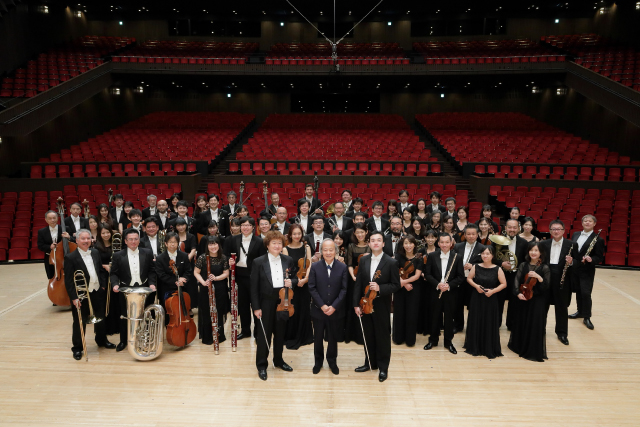
-
Kazuyoshi Akiyama/Conductor
Born in 1941, Kazuyoshi Akiyama studied conducting under Hideo Saito at the Toho Gakuen School of Music. Akiyama has held prestigious posts such as Music Director of the American Symphony Orchestra and the Vancouver Symphony Orchestra , Syracuse Symphony Orchestra , Tokyo Symphony Orchestra. During this time, Akiyama’s reputation spread to Europe and throughout North America, where he has been invited to conduct the Royal Philharmonic Orchestra, the NDR Symphony Orchestra, the Berlin Radio Orchestra, the Orchestre de la Suisse Romande, the New York Philharmonic, the Chicago Symphony , Los Angeles Orchestra, the Boston Symphony and many others. He is the recipient of numerous highly prestigious honors in Japan including the Person of Cultural Merit (2014) for his outstanding cultural contributions. Akiyama currently holds the title of Conductor Laureate of the Tokyo Symphony Orchestra, the Kyushu Symphony Orchestra and the Vancouver Symphony Orchestra, Honorary Conductor for Life of the Hiroshima Symphony Orchestra, Music Advisor to the Japan Century Orchestra and Music Director/Principal Conductor of the Chubu Philharmonic Orchestra, Artistic Director/Special Professor of Senzoku Gakuen College of Music, and Visiting Professor of Kyoto City University of Arts.
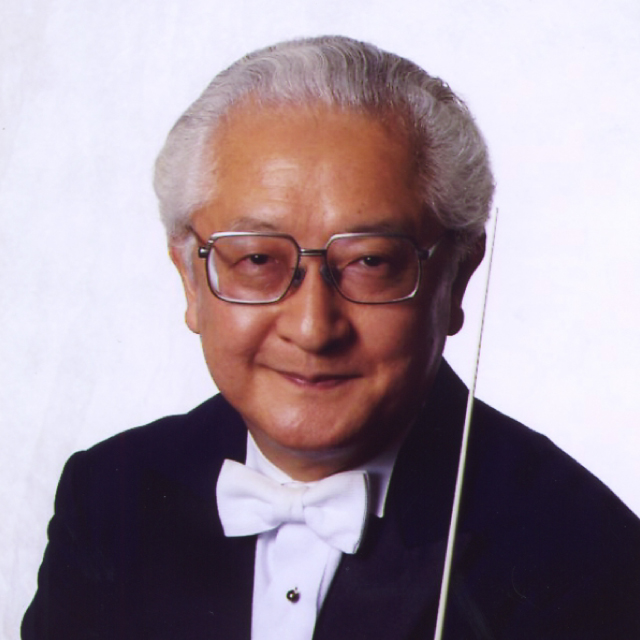
-
Momo Kodama/Piano
Since becoming the youngest winner of the Concours International ARD in 1991, Osaka-born Momo Kodama has been invited to perform with the Berlin Philharmonic, Boston Symphony Orchestra, Bayerisches Staatsorchester, Royal Liverpool Philharmonic Orchestra, NHK Symphony Orchestra, Orchestre Philharmonique de Monte-Carlo, Orchestre Philharmonique de Radio France, Orchestre de Chambre de Paris, and Düsseldorf Symphoniker Orchestra. She has appeared in recital at the Philharmonie de Paris, Amsterdam Muziekgebouw, Vienna Musikverein, Berlin Philharmonie and Konzerthaus, Suntory Hall, and Théâtre des Champs-Elysées. Her repertoire extends from the classical and romantic periods to contemporary works, and she is a distinguished interpreter of Olivier Messiaen. She has released two CDs for ECM, “Point and line” (Debussy and Hosokawa) and “La Vallée des Cloches” (Ravel, Takemitsu and Messiaen) which received outstanding acclaim from the New York Times, BBC Music Magazine, Classica, and Télérama. In addition, Momo has recorded two albums for Pentatone (Tchaikovsky and Martinu) in duo with her sister Mari.
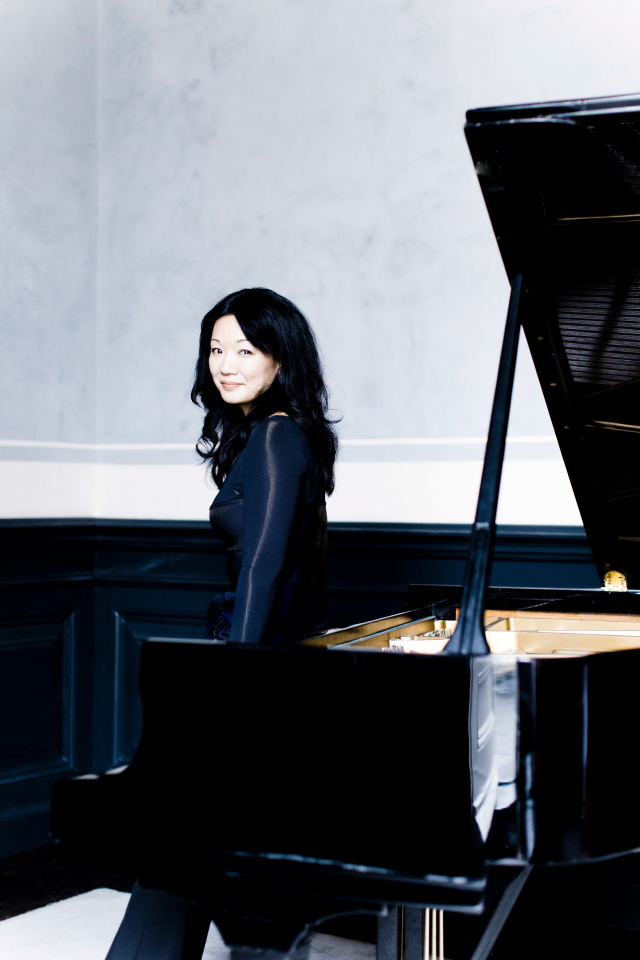
©Marco Borggreve
-
Nguyen Manh Zuy Linh :
LÀN GIÓ NHẸ BAY
A Gentle WindThe Western classical music tradition has been deeply rooted in Vietnam, whose economy has developed dramatically and led East Asia since 2010. The tradition was brought into the country by France in 1887 during the time of French Indochina. The opera houses found in the city centre of Hanoi and Ho Chi Minh are in Garnier-style, which have an imitate looking to the Place de l’Opera in Paris and may remind of a French provincial city. Vietnamese conservatories have been producing talented musicians (such as Đặng Thái Sơn, the pianist), who are now active in the music scenes of France, Russia and the United States. Referring to the relationship between Japan and Vietnam, Honna Tetsuji must have been an influential figure as he has enhanced the performance skill of the Vietnam National Symphony Orchestra, where he appoints music director. Despite the development of classical music culture in Vietnam, orchestral works by Vietnamese composers are lesser-known. If we list them up, those would be either by masters, who survived the Indochina War or the Vietnam War and composed in the Western Romantic nationalistic style under the Soviet Union socialism effect, or by Nguyễn-Thiên Đạo, who studied composition under Olivier Messiaen and sublimed Vietnamese sound to avant-garde music. In 1980, when the Vietnam War and Sino-Vietnamese War ended, and the country started to reconstruct itself, Nguyen Manh Zuy Linh was born as indeed one of many children who did not know about the wars. He was born in Saigon (the predecessor city of Ho Chi Minh). Raised in a family of music lovers, he learned the violin and piano when he was six years old and entered Ho Chi Minh City National Music School (the current Ho Chi Minh City Conservatory) at the age of nine. After graduating in 2000, he then studied composition for five years at Magnitogorsk State Conservatory, located in Russia near the border to Kazakhstan, where he created a violin concerto, piano and string quartet pieces, and ensemble music for traditional Vietnamese instruments. He also produced a dissertation about Alfred Schnittke’s polystyle. He continued musical activities in Russia and went back to Vietnam in 2009. He teaches music theory and composition at his alma mater and produces ballet music for Ho Chi Minh City Ballet, Symphony Orchestra and Opera (the guest orchestra of the Asia Orchestra Week 2014 as ‘Ho Chi Minh City Symphony Orchestra’). According to Honna Tetsuji, Linh is ‘a nihilistic, cool man who loves loneliness’. A Gentle Wind is a nine-minute orchestral work released in 2010. Above the piano’s repeated crotchets in pianissimo, the strings gently sing an adagio song in F minor. A subtly changing rhythmic motion reflects the sweeping wind. Sprinkling colourful timbre, the song becomes magnificent and disappear into silence at the end. His career as a ballet music composer cultivated the language of minimal music used in this short piece. Tonight’s concert is an excellent opportunity for the audience to listening to the creativity of Vietnamese mid-career generation.
HOSOKAWA Toshio :
Lotus under the Moonlight − hommage à Mozart −
for piano and orchestraIf somebody asks ‘who is the famous still-living composer of serious music (a.k.a. classical music) in Japan?’ to those working in the current music industry in Europe, then you will probably get the same answer: Hosokawa Toshio. Opera houses in European cities often programme Hosokawa’s new opera works along with his well-established works. The composer repeatedly gets commissions to produce new pieces for the Berlin Philharmonic and Salzburg Festival while serving as a residential composer in several orchestras. It is not hard to find the significance of his figure in the classical music field. In May 2021, Hosokawa was awarded Goethe Medal by the Goethe-Institut of the Federal Republic of Germany; the medal is to honour non-German individuals who have performed an exceptional contribution to international cultural dialogue. The following statement by the Institut notes about the reason for his awarding: ‘With his compositions, HOSOKAWA opens up spaces and connects people all over the world. The unique sound of his music transcends and turns the concert hall into a place of global encounter. In doing so, he succeeds in combining culturally specific ways of listening to music into an extraordinary work of sound art, while preserving his own traditions.’ Born in 1955 in Hiroshima, Hosokawa studied composition under Isang Yun at the Berlin University of the Arts and under Brian Ferneyhough and Klaus Huber at the University of Music Freiburg. Hosokawa’s work style in his earlier days showed a delicate sensibility to the sound of repleted nervousness, of which introspective tenderness may stimulate a sore to touch. His style changed in the 1990s as the composer integrated the tradition of after-war avant-garde music into his creativity. The composer has started his active engagements with theatre music production at the end of the 20th century, which enabled him to extend his expressiveness. HOSOKAWA not only pursues the sound that nobody has encountered, but he also employs the musical techniques of Europe and Japan. The piano concerto Lotus under the Moonlight - hommage à Mozart - was composed as a commissioned work for Norddeutscher Rundfunk in 2006 to commemorate Mozart’s 250th anniversary of the birth. The piece was programmed with Mozart’s Piano Concerto No.23 in A major K.488; the proviso for the commission was to use the same instrumentation as the Mozart’s (Hosokawa though added several percussion instruments such as Japanese wind chimes and crotales). Lotus under the Moonlight is the second piano concerto by Hosokawa after Silent Sea (2002) and premiered by Kodama Momo, today’s soloist. Having a master of ikebana flower arrangement as a grandfather, Hosokawa created several works, including concerto work for French horn and string quartet pieces, with the theme of ‘blossoming’, and Lotus under the Moonlight belongs to this series. Hosokawa said: ‘ZEAMI, the founder of Japanese traditional theatrical culture Nogaku which I adore, aesthetically entitled an excellent actor a “flower”. “Flower” was an important theme for traditional Japanese poems. These facts made me interested in “flower.”’ The solo piano, whose wriggling movement suggests a search for Mozart’s figure, is followed by the muted strings. Each string part divides into two sections at first, but the sound of F sharp by the whole strings then emerges before one realises (‘hesitate’). Above the piano’s trills, the vibraphone sharply rings (‘desirous’). The piano’s slow arpeggiation represents the moment of ‘lotus lifts its head out of the mire little by little’, and the strings’ glissando lightens up the piano like a moonlight (‘sunken’). The flute’s ascending dance follows the previous strings (‘Ying and Yang’). A piano cadenza is written in three staves with an impressive bass line in the middle of the piece. Violas are later joined by the whole strings, in which the clarinets secretly fill in. A ring of Japanese wind chime takes the audience to ‘dream’. Above the second violins’ glissando and tranquil percussions, the solo piano murmurs a fragment of Adagio from Mozart’s Piano Concerto K.488; a peaceful, calm scene is back. ‘As I composed this concerto, I imagined a lotus flower still in its budding stage on a quiet moonlit night, in the moment of its blossoming and dozing in a dream. This dream is a humble expression of my admiration for Mozart’s music.’ — Hosokawa Toshio
Ludwig van Beethoven : Symphony No. 5 in C minor, Op. 67
I. Allegro con brio
II. Andante con moto
III. Allegro
IV. Allegro - PrestoThe year 2020 was Beethoven’s 250th anniversary of his birth and was expected to be a festive year, unless if the pandemic of coronavirus disease did not happen. While numberless concerts were regretfully cancelled worldwide, it did not mean to have a diminished interest in this composer: the figure of the musical genius is constantly changing, according to the recent findings. A good example is his financial background. It had been believed that Beethoven was the first commoner-class composer in music history to be financially independent. However, a new finding overturned this notion: it suggested that he had financial support from young arts-lover Viennese aristocrats. The aristocrats demanded that the composer add artistry to oppose operas, the ‘commoner entertainment’. Therefore, Beethoven’s works feature less entertainment essence. The search for high artistry resulted in his intense expressiveness, which made the composer’s work catholic to all people. Beethoven’s masterpiece Symphony No.5 in C minor, Op.67 was premiered in 1808 in Vienna. In the symphony, he depicted a magnificent sound drama by using a minimum number of sonic materials. The first movement, Allegro con brio, begins with the well-known ‘fate’ motif and the opening theme is used throughout the movement to build a sonata form structure. Perhaps the only meaningless section is the solo oboe at the beginning of the recapitulation. It had been believed that the four-note ‘fate’ motif represented a scene in which, in the words of Anton F. Schindler (who was known to be one of Beethoven’s closest students), ‘Fate knocks at the door’. Another interpretation was made by Carl Czerny, who was also the best-known pupil of Beethoven; he stated that the singing voice of yellowhammer was the source of inspiration. In any case, the composer’s ability to build a structure from this simple motif is astonishing. The second movement, Andante con moto, is the theme and variation in a six-part musical form. Although a slow movement, it is also full of nervousness and is far from a relaxed atmosphere. An unstable mood leaps around in the third movement, Scherzo, and, after a dramatic pianissimo section, the movement succeeds directly to the fourth movement with an explosion. An extreme triumph of victory becomes out of control and is struck with multiple C major chords in force to dam up its enormous energy.
-
Yomiuri Nippon
Symphony Orchestra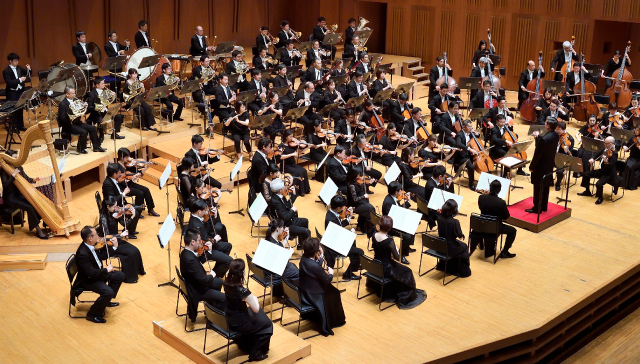 Yomiuri Nippon Symphony
Orchestra
was founded in April 1962 by three members of The Yomiuri Group: ¬The Yomiuri Shimbun
Newspaper company, Nippon Television Network Corporation, and Yomiuri Telecasting
Corporation ¬to promote orchestral music throughout Japan. Sebastian WEIGLE has been the
orchestra's tenth Principal Conductor since April, 2019. The orchestra has YAMADA Kazuki
as
Principal Guest Conductor, SUZUKI Masato as Associate Conductor & Creative Partner,
Sylvain
CAMBRELING as Conductor Laureate, Yuri TEMIRKANOV as Honorary Conductor, OTAKA Tadaaki
as
Honorary Guest Conductor, and KOBAYASHI Ken-¬ichiro as Special Guest Conductor. Since
its
foundation, YNSO has invited such distinguished conductors as A. KHACHATURIAN, L.
STOKOWSKI,
S. CELIBIDACHE, L. MAAZEL, V. GERGIEV as well as worldrenowned soloists such as A.
RUBINSTEIN, S. RICHTER, M. ARGERICH and Yo-¬Yo MA, to name only a few. The orchestra was
invited to represent Asia at the Festival de Musica de Canarias on the Canary Islands in
2000. In the same year, YNSO became the first Japanese orchestra to perform in the
annual
Abonnement series at the Grosses Festspielhaus in Salzburg. In April 2017, the orchestra
saw
its 55th anniversary and in November performed Messiaen's opera "Saint François
d'Assise" in
concert style with CAMBRELING, which was Japan premiere as a full¬length performance. It
was
highly acclaimed by people in various fields. In addition to its classical repertoire,
YNSO
has been active in introducing contemporary works composed by internationally prominent
composers. Official Website
Yomiuri Nippon Symphony
Orchestra
was founded in April 1962 by three members of The Yomiuri Group: ¬The Yomiuri Shimbun
Newspaper company, Nippon Television Network Corporation, and Yomiuri Telecasting
Corporation ¬to promote orchestral music throughout Japan. Sebastian WEIGLE has been the
orchestra's tenth Principal Conductor since April, 2019. The orchestra has YAMADA Kazuki
as
Principal Guest Conductor, SUZUKI Masato as Associate Conductor & Creative Partner,
Sylvain
CAMBRELING as Conductor Laureate, Yuri TEMIRKANOV as Honorary Conductor, OTAKA Tadaaki
as
Honorary Guest Conductor, and KOBAYASHI Ken-¬ichiro as Special Guest Conductor. Since
its
foundation, YNSO has invited such distinguished conductors as A. KHACHATURIAN, L.
STOKOWSKI,
S. CELIBIDACHE, L. MAAZEL, V. GERGIEV as well as worldrenowned soloists such as A.
RUBINSTEIN, S. RICHTER, M. ARGERICH and Yo-¬Yo MA, to name only a few. The orchestra was
invited to represent Asia at the Festival de Musica de Canarias on the Canary Islands in
2000. In the same year, YNSO became the first Japanese orchestra to perform in the
annual
Abonnement series at the Grosses Festspielhaus in Salzburg. In April 2017, the orchestra
saw
its 55th anniversary and in November performed Messiaen's opera "Saint François
d'Assise" in
concert style with CAMBRELING, which was Japan premiere as a full¬length performance. It
was
highly acclaimed by people in various fields. In addition to its classical repertoire,
YNSO
has been active in introducing contemporary works composed by internationally prominent
composers. Official Website
-
Sachio Fujioka/Conductor
Principal Conductor of the Kansai Philharmonic Orchestra Principal Guest Conductor of the Tokyo City Philharmonic Orchestra Following his debut with the BBC Philharmonic in November 1993, Fujioka has appeared with the Orchestra on many occasions including his debut at the BBC Proms in London in 1994. Between 1995 and 2000 Fujioka was Principal Conductor of the Manchester Camerata. In 2001, Fujioka was appointed Principal Conductor of the Kansai Philharmonic Orchestra in Osaka. He is now in his 22nd season as Principal, with which he has conducted over 40 concerts each year. The strong feeling of unity in these performances has thrilled audiences and earned high acclaim. In April 2019, he was appointed as Principal Guest Conductor of the Tokyo City Philharmonic Orchestra and there are great expectations for future activities of both parties. Fujioka has released 8 CDs with the BBC Philharmonic including the works of Japanese composer Takashi Yoshimatsu on the British label Chandos. Then, in September 2021, he released the complete Sibelius’s Symphonies, which recorded a live performances with the Kansai Philharmonic Orchestra on ALM Records. He also appears in TV program “Enter the Music” since October 2014. (BS TV TOKYO every week on Saturday from 8:30a.m.) Sachio Fujioka was the recipient of the 2002 Akeo Watanabe Foundation Music Award.
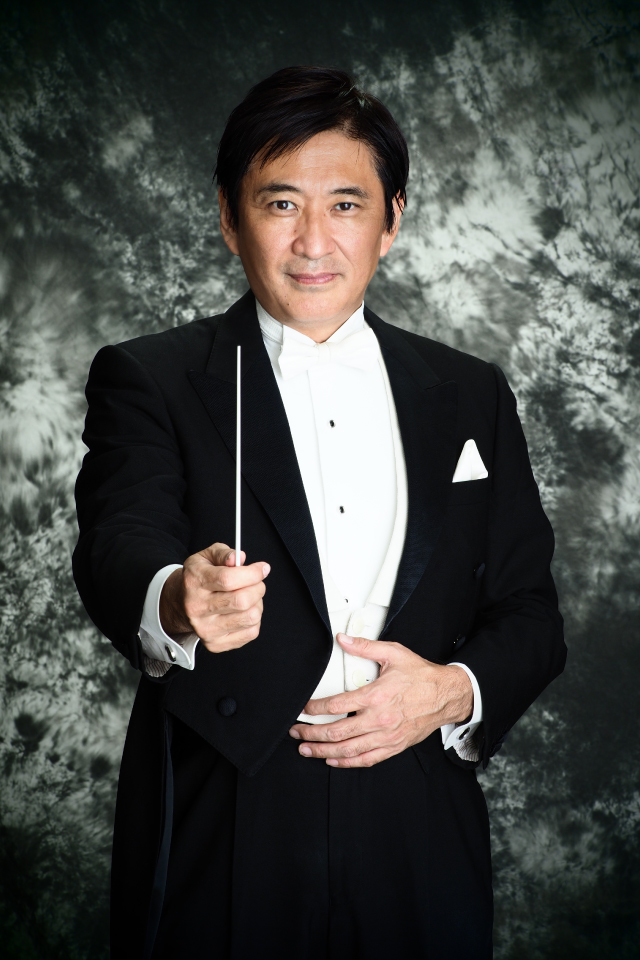
©Shin Yamagishi
-
Tatsuki Narita/Violin
Tatsuki Narita won 2nd prize in the Concours International Marguerite-Long-Jacques-Thibaud in 2010, and 2nd prize as well as Ysaye prize in the Concours Reine Elisabeth en Belgique in 2012. He has performed with many conductors and orchestras both in Japan and abroad earning high acclaim. He is also active in performing chamber music and collaboration with contemporary composers. Tatsuki plays the 1711 “Tartini” on loan from the Munetsugu Collection.
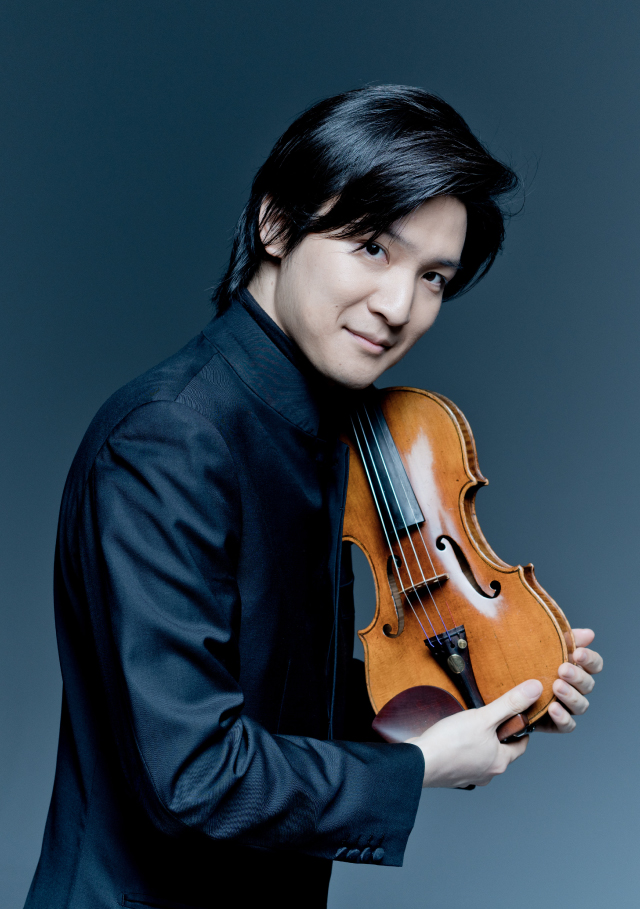
©Marco Borggreve
-
Isang Yun : Bara (1960) for orchestra
Isang Yun (1917-95) was born in Tongyeong, a harbour town at the south end of the Korea, during the time of Japanese occupation. He studied the cello at the Osaka College of Music and composition under Ikenouchi Tomojirō in Tokyo. During the Second World War, when Yun was back in Korea, he was imprisoned for being involved in the Korean independence movement. After being released, the composer made steady efforts to continue musical activities, including teaching music in his mother country, and he received the Seoul City Culture Award in 1955. Students in peripheral areas of Tongyeong still sing school songs composed by Yun. After receiving the most honoured award for an artist in his new homeland, Yun travelled to Paris in 1956 and then to Berlin to study music under Josef Rufer, a student of Arnold Schoenberg, at the Berlin Musikhochschule. The encounters with the twelve-tone technique and state-of-the-art musical trend of the middle-20th century Europe inspired the 40-year-old composer, and this new experience resulted in him being the first East-Asian avant-garde music composer. In 1964, he settled in Berlin for further musical activities. However, in 1967, Yun was abducted by the South Korean secret service due to alleged acts of espionage; he was sentenced to death by the military government of South Korea. Thanks to the worldwide protest and petition led by Herbert von Karajan and other artists, Yun was released and naturalised in Germany. Later, the composer played an active part in education and influenced many young composers, including Hosokawa Toshio. Yun was never reconciled with South Korea in his lifetime and laid to rest beside Mendelssohn and Brecht in Berlin as a German composer after his death in 1995. Upon entering the 21st century, a concert hall was built in Tongyeong in honour of Yun, and the composer’s remains were brought to the cape beside the hall in 2018; he rests quietly in his grave overlooking the harbour. It is evident from his career that Yun, as a composer, had an origin in the Western Classical/Romantic period music brought into East Asia in the late 19th century. As soon as he settled in Europe after the war, he discarded 30 pieces of his old works: in his words, ‘All the music composed only according to my free will, now here, now there, now West, now East – that is not any art.’ Yun faced a musical conflict between the idea of ‘core’ (a single sustained note) characterising Korea’s traditional court music and the stringent rule on the formal structure in the Western total serial music. It was the similar issue that Antonín Dvořák faced a generation ago. After the compositions of piano pieces in 1958, Music for Seven Instruments (1959), and String Quartet No.3 (1959/61), Yun composed his first large-scale orchestral work, Bara (1960). Bara was given a premiere performance by Rundfunk-Sinfonieorchester Berlin in 1962. Bara is the name of a traditional Korean cymbal used in the Korean Buddhist ritual dance called Barach’um. The music of Barach’um symbolises the transient state of nature. In the 10-minute work of multiple resonating percussions, Yun incorporated an ‘organic’ musical structure inspired by traditional Korean music: the strings represent the purity of heaven, the percussions and the brasses represent the power of the dramatic earth, and the woodwinds represent the mediating forces. Bara consists of three parts: the first part, Largo, begins quietly, then passes to the animated second part, Andante, and ends with a contrast between movement and stillness in the third part, Allegro. The following quote by Yun on the work is on the publisher’s official website: ‘Imagine the mystic, meditative atmosphere of a Buddhist temple. Monks and nuns concentrate on recalling and prayer dance with very slow movements and then gradually reach an ecstasy. You will already have encountered meditative silence and ecstatic tension in the first bars of my piece Bara. You know the generous curves of East Asian calligraphy on the picture scroll – don’t you see the characteristic movements of the solo violin and the dynamic swelling and fading chords of wind as thick brushstrokes of the characters? Let us take another example. Each instrument, as many small brushstrokes, is put together to draw the whole painting. The storm churns up the water’s surface; the waves foam up and collapse into one another. The tangle of clay splatters borders on chaos.’ — Isang Yun
Chen Gang / He Zhanhao :
The Butterfly Lovers (Liang Shanbo and Zhu Yingtai)
concerto for violin and orchestra
Adagio cantabile
Allegro
Adagio assai doloroso
Pesante - Piu mosso - Duramente
Lagrimoso
Presto resoluto
Adagio cantabileWhile Isang Yun was searching for his new musical style in Berlin, the violin concerto The Butterfly Lovers was premiered in 1959 by the Shanghai Conservatory Symphony Orchestra to celebrate the 10th-anniversary foundation of the People’s Republic of China. The concerto soon gained popularity worldwide, and several arrangements were created, including for solo erhu (a Chinese traditional string instrument) and Chinese orchestra. The work is arguably the most well-known violin concerto of China from the 20th-century. Shanghai in the late Qing dynasty played an important part in absorbing global musical cultures due to the foreign concessions based in the city. Even at the time of the 1911 Xinhai Revolution, though under the Soviet Union’s socialistic realism, the Romantic period music of Western culture prevailed without a doubt. The Shanghai Symphony Orchestra was founded before the First Sino-Japanese War outbreak and the Shanghai Conservatory of Music during the Interwar period. He Zhanhao (1933-) studied the violin at the Shanghai Conservatory of Music after working as an erhu player in the orchestra of the Zhejiang Opera Company. Chen Gang (1935-) was born in Shanghai, where his father was a famous songwriter. Gang had a musical education from his father and studied composition at the Shanghai Conservatory of Music. There was no obstacle for them to compose the Western-style violin concerto together in 1957. Zhanhao and Gang employed in The Butterfly Lovers the musical language of 19th-century nationalism, similar to the one used by Dvořák. However, the work’s formal structure is entirely different from the sonata form typically found in classical concerto music; instead, it is a symphonic poem based on the well-known Chinese folk tale of the same title. The concerto tells the story of the tragic love between a beautiful, high-class girl Zhu Yingtai (played by the solo violin) and a boy Liang Shanbo (played by the orchestra’s principal cellist). The melodic material used in the concerto was from the Yue Opera, Liang Shanbo yu Zhu Yingtai. It is a famous opera in Zhejiang province and must have been familiar for Zhanhao. The story begins with the springtime scene in Jiangnan. Zhu conceals her identity and disguises herself as a boy to study at school. The solo violin sings a love theme expressing her romantic feeling toward a classmate, Liang, who is also her close friend. A cadenza follows the love theme, and the orchestra depicts both their friendship and the end of peaceful days at school. Zhu abandons study and intensely resists her father for an arranged marriage of feudal reason. Liang, visiting Zhu’s house, is shocked to discover his best friend’s identity as a girl and witnesses the hardship that Zhu is confronting. Liang notices his love for Zhu; the duet song of the solo violin and the solo cello depicts this scene. The following stormy orchestral setting represents both the lament of Zhu for her fate and the sorrow of Liang for the unrequited love. Liang dies of a broken heart. The story reaches the climax when Zhu visits his grave and throws herself to death. Finally, calm weather as the opening scene comes back, and the two lovers emerge as butterflies. Their souls fly away forever and ever.
Antonín Dvořák : Symphony No.9 in E minor, Op.95, From the New World
I. Adagio - Allegro molto
II. Largo
III. Molto vivace
IV. Allegro con fuocoThe economy of Bohemia, the historical province in Habsburg’s Empire, was elevated at the time Antonín Dvořák (1841-1901) was born. The elevation was due to the growth of civil society in the province, which led to the formation of a stable society unless citizens did not spotlight political dissatisfaction. Despite the political background, Dvořák, with an affirmative mind, accepted the musical template established by Haydn and Mozart in Vienna, the imperial capital of the Empire. Brahms, the prominent figure of the Viennese music society, discovered Dvořák’s talent, and the Bohemian composer acquired global fame in England and the United States by the 1880s. At that time, Dvořák started to add abstract ethnicity to his melodic and rhythmic ideas to express his intention of reformation in the classical tradition. While proving the effectiveness of the Classical period music format and that of the subsequent Romantic period, Dvořák tried to integrate Bohemian spirit in his works. The title From the New World of the symphony refers to the North American plate. In 1885, a wealthy widow founded the National Conservatory of Music in Manhattan to realise music education for people regardless of race difference and liberate American music as an independent culture from European colonialism. Dvořák was invited to the conservatory as director. Three months had passed after arriving in the United States when he started to compose a new symphony, with inspiration gained from black spirituals and Native American’s folk songs. This new work was the New World Symphony, which made its premiere in 1893 in New York. The director resigned after three years in service and went back to his mother country. The symphony consists of the standard four movements, but each movement’s main theme was composed by Dvořák with an influence of the new world’s musical culture. The first movement starts with a slow Adagio introduction. The succeeding Allegro molto is an obvious sonata form, while the explicit poetic quality of the main theme leaves an impression on the audience’s mind. The second movement, Largo, is too famous for the English horn’s theme, whose melody later became arranged into a famous song called Goin’ Home. The theme returns in the voices of principal strings with affection. Scherzo of the third movement depicts the Native American’s dance with the Czech rhythm. The fourth movement, Allegro con fuoco, is the finale in sonata form. Each movement’s main theme appears in the movement in a different appearance. A long fermata ending by the woodwinds disappears into a quietness like a sunset view from the top of a skyscraper in grandeur New Jersey.
-
Tokyo Philharmonic Orchestra
In 2011, the Tokyo Philharmonic Orchestra celebrated its 100th anniversary as Japan’s first symphony orchestra. With about 160 musicians, TPO performs both symphonies and operas regularly. TPO is proud to have appointed Maestro Myung-Whun Chung, who has been conducting TPO since 2001, as Honorary Music Director, Maestro Andrea Battistoni as Chief Conductor and Maestro Mikhail Pletnev as Special Guest Conductor. TPO has established its world-class reputation through its subscription concert series, regular opera and ballet assignments at the New National Theatre, and a full, ever in-demand agenda around Japan and the world, including broadcasting with NHK Broadcasting Corporation, various educational programs, and tours abroad. TPO has partnerships with Bunkamura Orchard Hall, the Bunkyo Ward in Tokyo, Chiba City, Karuizawa Cho in Nagano and Nagaoka City in Niigata. Official Website
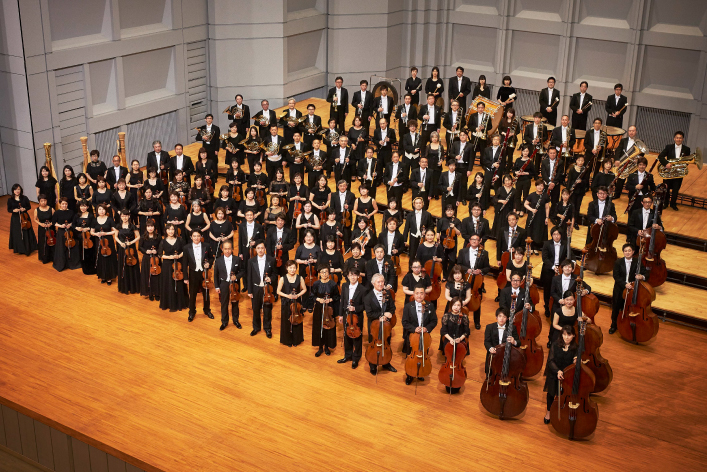
©Takafumi Ueno
-
Keiko Mitsuhashi/Conductor
Originally from Tokyo, Keiko Mitsuhashi graduated from the Tokyo National University of the Arts and completed her master’s course there. She refined her skill at the Universität für Musik und darstellende Kunst (Vienna, Austria) and the Accademia Chigiana (Siena, Italy). Trained by Seiji Ozawa, Ken’ichiro Kobayashi, G. Gelmetti, E. Accel, H-M. Schneitt, Yuji Yuasa, Yoko Matsuo and Masamitsu Takahashi, Mitsuhashi was the first Japanese winner of the 10th Antonio Pedrotti International Conducting Competition and the first woman who became a prize winner at the 9th Arturo Toscanini International Conducting Competition receiving the second prize along with the Audience Award. Recipient of the 12th Hideo Saito Memorial Fund Award, she has led, as a guest conductor, major orchestras inside her country. European leading orchestras have invited her as well for their subscription concerts, most notably the Orchestra Sinfonica di Milano Giuseppe Verdi, the Slovak Philharmonic and the Orchestra Haydn di Bolzano e Trento. In 2009, the Newsweek Japan selected her as one of the “100 Japanese People the World Respects.”
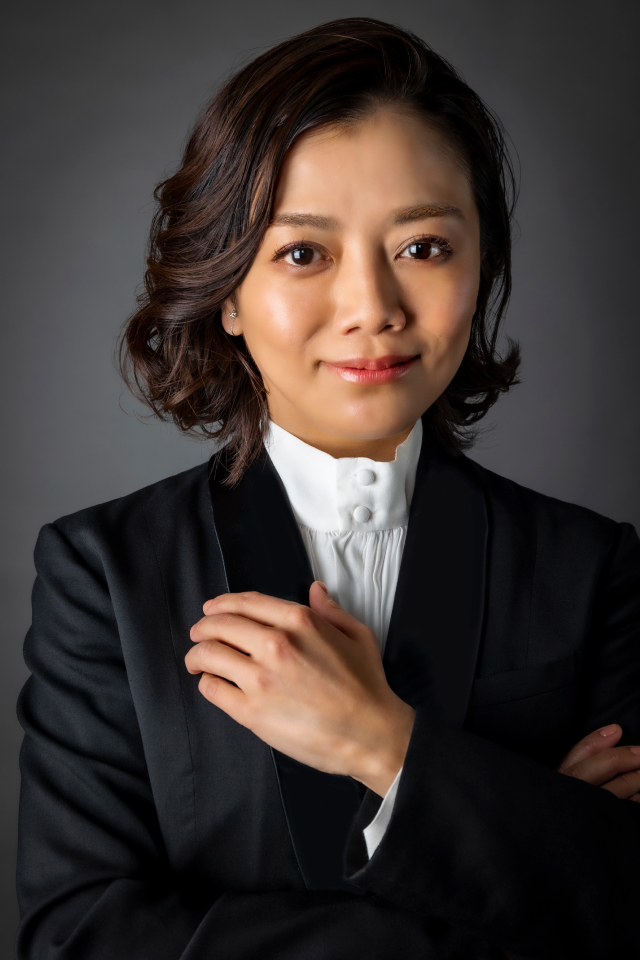
©Earl Ross
-
Daisuke Oyama/Bariton
Born in 1982, Daisuke Ohyama graduated from Tokyo University of the Arts winning the first prize. After making a sensational debut in 2008, with the role of Danilo of "The Merry Widow" at Hyogo PAC, he has been engaged in many Opera productions. One of the most acclaimed performance he made is, Figaro in a special production "Marriage of Figaro" by conductor Michiyoshi Inoue and Hideki Noda, one of Japan's most famous theatre directors. He also showed overwhelming presence in productions such as, "Black Jack" composed by Akira Miyagawa based on a best-selling manga by Osamu Tezuka, and Celebrant of Bernstein's "Mass". He is regularly invited as a soloist to concerts performing Baroque music and religious work s, while he also has good reputation as an actor of theatre play. He made his appearance to the musical "The Phantom of the Opera" by Gekidan-Shiki. His unique charm, talent and wide-ranged experiences enable him to work as a script writer, narrator, or navigators too. Oyama now teaches at Senzoku Gakuen college of music as well as theater studio “Kakushin han”
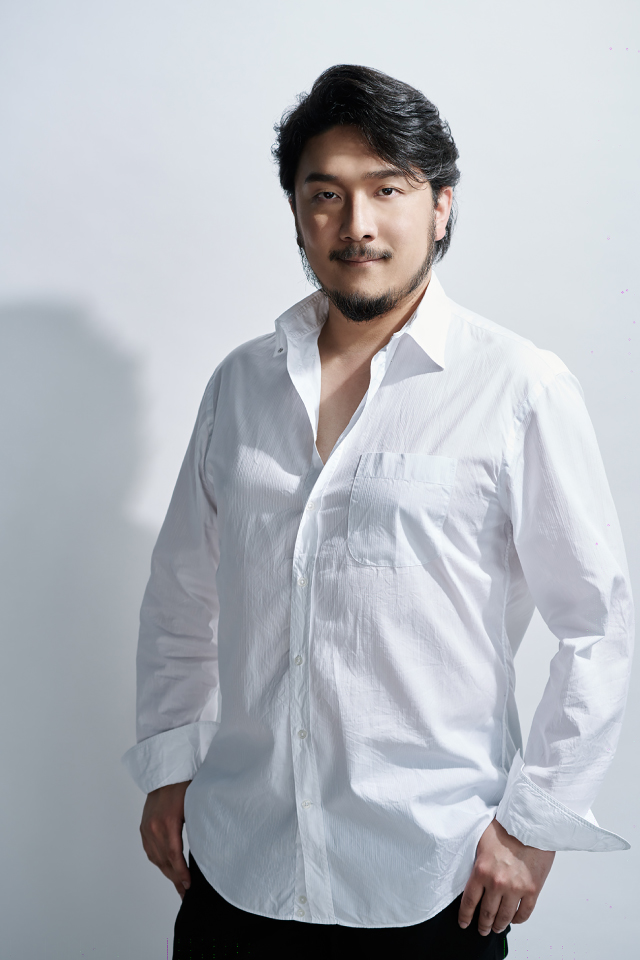
©Yoshinobu Fukaya
-
People from the postwar generation would feel hungry when they hear the opening marimba music of NHK TV programme 今日の料理 (Kyou-no-ryouri – ‘Today’s Cooking’), or you might have an urge for travelling after hearing the magnificent sound of strings in 新日本紀行 (Shinn-nihonn-kikou – ‘New Japan Journey’). Those who watched much TV as a child remember the theme songs of Princess Knight, Captain Ultra and Mighty Jack, and the specular soundtrack of the animation Jungle Emperor Leo sets the majestic scene of a lion king roaring towards the African skies. These were all created by composer Tomita Isao (1932-2016), and he was the man who contributed to the original soundscape of postwar Japan. Alongside composition, Tomita had another face as an internationally acclaimed synthesiser artist. He encountered a newly-born Moog synthesiser when composing music for the Toshiba IHI Pavilion of the Japan World Exposition at Osaka (1970). Studied art history at Keio University, the self-taught composer was foreign to contemporary electronic music of the 1960s by the coeval composers, such as Mayuzumi Toshiro, Ichiyanagi Toshi and Yuasa Joji. While Xenakis and Stockhausen regarded electronic acoustics as art and experimented with its artistic potential at the 1970 Exposition, Tomita, on the other hand, viewed the synthesiser and electronic sound as ‘an instrument with futuristic sound for popular music and commercial music production’. Struggling for a few years to understand the property of the newly acquired instrument, Tomita took 14 months to make a tape of arranged Debussy’s piano piece (or it might be correct to rephrase it as ‘recreated’). He brought the tape to New York since Japanese record labels had no interest in his pioneering challenge. An American producer highly rated Tomita’s incredible work, and, in 1974, RCA Corporation released his LP album. The album was soon released in Japan with the title月の光 (Tsuki-no-hikari – ‘Moonlight’). The album charted first place of the Billboard Classical Album and was also nominated for several categories of the Grammy Awards in the same year: this was the first-ever achievement by a Japanese composer. The succeeding reproductions of orchestral scores – Mussorgsky’s Pictures at an Exhibition and Stravinsky’s The Firebird Suite - on synthesiser were also big hits, and these albums recorded the top sales. Tomita’s arrangement on Holst’s The Planets was a big adventure; the artist took one step further from the faithful reproduction of the original scores. He took daring acts of overlapping two movements from the suite and inserting an electronic interlude originally composed by Tomita. These arrangements enabled him to express both the fantasy of and yearning for the universe more directly. After arduous negotiations with Holst’s copyright holder, the album resulted in a significant global hit. This event changed the suite’s status (especially Jupiter, the Bringer of Jollity) from a masterpiece, only recognised by a few British-music lovers, to the beloved classical music in Japan. Tomita, as the globally renowned artist since the 1980s, produced acoustics sounds at the events of Hudson River (New York) and the Danube (Linz), as well as the ones at the 130th anniversary of the opening of the Port of Yokohama, Okinawa International Ocean Exposition, and the 2005 World Exposition in Aichi. He also paid prompt attention to Vocaloid software, the new electronic music technology of this century. Hatsune Miku, a Vocaloid singer, collaborated with Tomita’s live electronics work Symphony Ihatov (2012) as a soloist; it has been performed inside and outside Japan as another universe fantasy work since The Planets. He passed away at the age of 84 in the middle of composing a comprehensive stage production for Hatsune. Tonight’s concert is in honour of Tomita, for his achievements in music technology between the end of the 20th and 21st century. While Stockhausen of the European avant-garde music was composing an opera titled Light for a ‘modern orchestra’ of several synthesisers, Tomita, at almost the same time, made a historical accomplishment on diffusing electronic sounds outside the communities of avant-garde music fans.
TOMITA Isao : Symphonic Poem Jungle Emperor Leo (2009 edition version)
Part I
Morning in the jungle
Animal’s morning greeting
On their way home
Hunters come
Panja fights
Peace in the jungle
Eliza is captured
The death of Panja
Part II
Eliza on board the freighter
The birth of Leo
Eliza’s tale
The stormy sea
Three funny fish
A saw shark
Mama turns into a star
Return to AfricaThe relationship between Tomita and Tezuka Osamu, a Japanese manga artist and animator, was firmly close: the composer wrote soundtracks for Tezuka’s animated works, and their collaboration later became apparent as a five-CD box. In 1966, before Tomita had met the synthesiser yet, he orchestrated Mussorgsky’s piano work, Pictures at an Exhibition, with his interpretation and provided this newly orchestrated score to Tezuka’s animated work of the same title. Probably, the most well-known collaborated work by both is Jungle Emperor Leo. The opening theme song of the first coloured TV-animated series in Japan involved neat incidental music with an essence of theatre music. It culminated in Tomita's early creations. The animation was a big hit in 1966, and Tomita created a score, KING OF THE JUNGLE - Symphonic Poem for Children, in which the composer arranged the animation soundtrack for a large-scale orchestra. Under the curriculum guideline made by the Ministry of Education, the score was created as teaching material on orchestral instruments. The symphonic poem followed the storyline of the animation, and its LPs included a narration on musical-instruments description. The symphonic poem was for a long time a phantom, but, in 2009, the work made a re-debut after the process of score rearrangement. The basic configuration of the symphonic poem did not change from the original. The 50-minute grandeur symphonic poem consists of 16 sections that tell the following narrative. ‘In the jungle of Africa, the lion king Panja was giving safe heaven. One day, however, heaven was destroyed by invading human hunters who emerged at the gathering of animals. Panja fought against the hunters and restored heaven, but, on the other hand, the lion queen Eliza was captured. Panja ventured into the enemy’s territory alone to take his wife back, though he got killed. Eliza was kidnapped and shipped to the world of humans. Eliza gave birth to a son, Leo, on the freighter and taught him his father’s brave spirit. A storm hit and wrecked the ship. Eliza lost her life, but Leo escaped, and the young lion headed to Africa with fish’s support.’
Claude Debussy : Clair de Lune
A French composer of the late 19th century, Claude Debussy (1862-1918), lived at the apex of the art culture and was regarded as the ‘Impressionist of music’. The term ‘Impressionist’ refers to painters (such as Claude Monet and Édouard Manet), who drew as what they saw and made the old art of drawings a thing of the past. Debussy was one of the Impressionist composers whose work focused on what he heard in real life rather than relying on his knowledge of composition rules and logic. That might be the reason why Tomita picked Debussy for his first synthesised music. Clair de Lune is Debussy’s early age masterpiece and is the third movement of Suite bergamasque (1900), initially written for a solo piano. The orchestration performed tonight is by Leopold Stokowski, ‘the magician the 20th century modern orchestra’, whom Tomita gained an inspiration.
Igor Stravinsky : The Firebird Suite (1919 version)
Introduction – The Firebird and its dance – The Firebird’s variation
The Princesses’ Rondo (Khorovod)
Infernal Dance of King Kashchei
Lullaby
FinaleIgor Stravinsky (1882-1971), the son of a bass opera singer born in Saint Petersburg of the Russian Empire, had a talent for converting human body movements to sounds. With a Russian impresario Sergei Diaghilev, who gained fame in Paris before the First World War and succeeded in becoming the owner of the Ballets Russes, the composer created several works based on Russian fairy tales. His successful ballets included The Firebird (1911), which made Stravinsky a celebrated figure. The Firebird Suite compiled several movements from the ballet as one complete piece: The Firebird and its dance, The Firebird’s variation, The Princesses’ Rondo, Infernal dance of King Kashchei, Lullaby and Finale. Referring to Tomita, his third synthesised work was the complete reproduction of this suite, which was his first to base his work on the existing orchestral score. Tezuka illustrated a phoenix on Tomita’s LP jacket (Tezuka’s manga series Phoenix is one of the most popular characters).
TOMITA Isao : Rise of The Planet 9 (from Doctor Coppelius)
Doctor Coppelius, a live-electronics work for orchestra, synthesisers and ballet, was released in 2016 as the posthumous work by Tomita. This comprehensive stage production was composed for realising the dream of the late Itokawa Hideo, whom Tomita revered. Itokawa, ‘the father of Japanese rocketry’, was a lover of music and ballet who dreamed of dancing with a hologram dancer. The work features singing and dancing by virtual singer Hatsune Miku. Tomita passed away before completing the work’s opening movement; except for the uncompleted movement, Doctor Coppelius made its premiere as the memorial concert for the composer. Titled as 日の出 (‘Rising Sun’) in Japanese, Rise of the Planet 9 is truly the ‘Tomita-quality’ work and grandiosely concludes his whole synthesised works. Tonight’s performance is the version for an orchestra only (the same version performed at the lighting moment of the Olympic flame in the Tokyo 2020 Olympic Games opening ceremony). In the complete score, synthesiser chorales are at the introduction and the coda, with the flying-to-space sound added, and Hatsune ends the piece with her solo.
-
Central Aichi Symphony Orchestra
In 1983, Nagoya City Orchestra (later renamed as Central Aichi Symphony Orchestra in 1997) was formed by a group of professional musicians based in Nagoya, Aichi. With a financial support kindly provided by the City of Iwakura, we have been forming a great music educational partnership with the city since 1990. In 2009, we became a general incorporated association and, in April 2021, we were certified by Aichi Prefecture as a public interest incorporated association. Since April 2019, we invite Kosuke TSUNODA as Principal Conductor. Under the baton of Tsunoda and with the following conductors – Leoš SVÁROVSKÝ as Honorary Music Director, Chosei KOMATSU as Honorary Conductor, Yoko MATSUO as Special Guest Conductor, Ichiro SAITO as Principal Guest Conductor, and Seiichi KOTANI as Resident Conductor – CASO has been providing several annual concerts including a series of concerto-only programs and Beethoven’s 9th Symphony, in addition to the annual seven subscription concerts. Providing more than a hundred concerts a year including ballets, operas and musicals, CASO’s performance has been greatly welcomed by audiences. We have concluded agreements on music and cultural promotion with Handa city and Inazawa Culture Promotion Foundation, in 2015 and 2019 respectively. CASO’s international tours in Asia are all received with high prizes. Not only at Inner Mongolia (2007), we are proud to have performed for the Japanese Agency for Cultural Affairs’s program ‘International Cultural Exchange and Cooperation’ in Bangkok (Thailand, 2009), and also for Busan MARU International Music Festival (South Korea, 2017). We are also honored to announce that we have won several art prizes including Aichi Prefecture Arts & Culture Award (1996), The Art-Encouragement Prize of The Year 2004 (2005, by Nagoya), and The Nagoya Music Pen-Club Prize (2007). Official Website
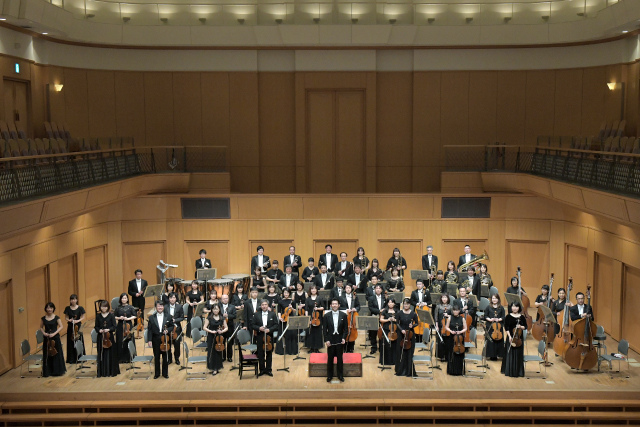
-
Kosuke Tsunoda/Conductor
Principal conductor of the Central Aichi Symphony Orchestra and Associate conductor of Sendai Philharmonic orchestra, Kosuke Tsunoda is fast establishing himself as one of the leading conductors of his generation. Tsunoda has conducted most of the country’s major orchestras. Outside Japan, he has conducted the orchestra of the Shanghai Opera House and, during competitions and courses, symphony orchestras of the caliber of the Berlin Konzerthaus Orchestra, MDR Symphony Orchestra, the Brandenburg Symphony Orchestra and Hof Symphony Orchestra. Passionate about opera and ballet, he has conducted many productions throughout his career. In 2019, he toured Japan conducting new production of the opera ‘Hänsel und Gretel’.
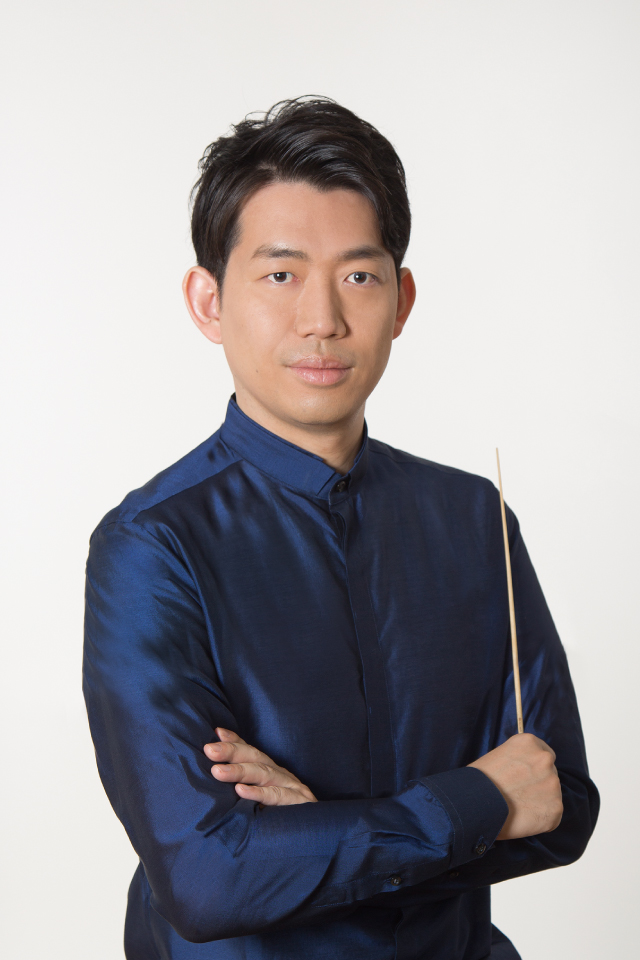
©Hikaru Hoshi
-
Ayana Tsuji/Violin
Ayana Tsuji is one of the most promising young violinists of Japan. Born in Gifu in 1997, she started the violin at age 3. She was awarded First Prize at the 2016 Montreal International Competition, together with five other prizes (the Best performance of the compulsory Canadian work, the Best semifinal recital, the Best performance of a Sonata in the semifinal round, the Bach Award and the Paganini Award). Ayana Tsuji has performed as soloist with orchestras such as the Montreal, NHK, Tokyo Metropolitan, Tokyo, Kyoto symphony orchestras ; Czech, Tokyo, Nagoya, Osaka philharmonic orchestras ; Orchestre de la Suisse Romande, Sinfonia Varsovia, Musica Viva… Ayana Tsuji is also active as recitalist and chamber musician, and has performed with Tsuyoshi Tsutsumi, Akira Eguchi, Kei Itoh, Emmanuel Strosser, Edicson Ruiz. Ayana Tsuji graduated from the Tokyo College of Music, where she has studied with Kenji Kobayashi, Toshiko Yaguchi, Kimiko Nakazawa, Machie Oguri, Koichi Harada and Régis Pasquier. Ayana Tsuji has recorded violin concertos by Charles-Auguste Bériot with the Czech Chamber Philharmonic Orchestra at Naxos. Her debut CD with Warner Classics, featuring a selection of pieces from the recording of her performance at the 2016 Montreal Competition. In 2018, she received the 28th Idemitsu Music Award. Highlights of the 2020/2021 season, she will play La Folle Journée de Nantes and Tokyo, Osaka philharmonic with Mo. Kazuyoshi Akiyama, Tokyo symphony with Mo. Jonathan Nott, Sapporo symphony with Mo. Tadaaki Otaka, Japan philharmonic with Mo. Alexander Lazarev, Yamagata symphony with Mo. Tetsuro Ban… Ayana Tsuji plays a Joannes Baptista Guadagnini 1748, on loan from the Yellow Angel NPO Corporation.
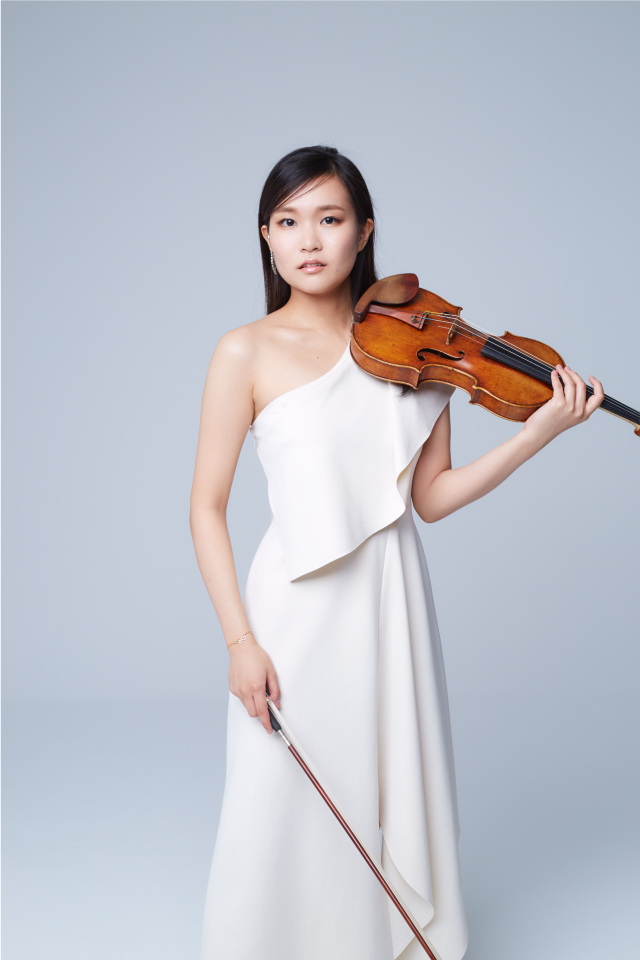
©Makoto Kamiya
-
YAMADA Kósçak : Overture in D major
If to start saying about the achievements made by Yamada Kósçak (1886-1965), it is noticeable the endless appearances of the following adjective phrase: ‘he was the first in Japan of doing/composing…’. However, in the global history of world music, the emergence of a pioneer of Western music in Japan could be appraised as one of the classic examples of unfoldment from the late Romantic period music to the 20th century. In a sense, Yamada of Japan was one of the composers whose life was affected by the time he lived, as in the case of Dmitri Shostakovich of the Soviet Union. Born in Fukushima, Yamada received music education from his brother-in-law (a British linguist married to Yamada’s older sister) and entered the Tokyo Music School in 1904. After graduation, he flew to Germany, enrolled at the Royal Academy of the Arts of Berlin and studied under Max Bruch in 1910. During his study in Berlin, Emperor Meiji of Japan was demised in July 1912, and a new era succeeded was named Taishō. On the 22nd March, only three months before the new era began, Yamada wrote Overture in D major, a piece less than five minutes in duration. Its subsequent work, Symphony in F Major ‘Triumph and Peace’ (the first symphonic piece ever composed by Japanese), was completed in November. Therefore, Overture in D major was the only work for Western orchestra composed in the Meiji era. The overture is in a sonata form but without a development section. The exposition introduces the primary theme in D major and the subordinate theme in A major, and then the subordinate theme comes back in the home key at the recapitulation; Yamada faithfully followed the classical sonata form. Although the overture features a solid classical character, Berlin witnessed Richard Strauss’s elaborated tone poems with gigantic architectural schemes and Gustav Mahler’s death when Yamada was studying. The figure of the talented young man from Japan is observable in the chromatic taste of the subordinate theme. Yamada cast off his old composing style heavily influenced by late Romantic music and started to clarify his identity as a Japanese artist since he met a poet Kitahara Hakushu after returning to Japan in 1922.
KISHI Koichi : Violin Concerto
I. Allegro molto
II. Quasi andante
III. Molto vivaceWhen Yamada Kósçak was preparing for his travel to Berlin, Kishi Koichi (1909-37) was born to a wealthy family in Osaka. Unlike Yamada of the Meiji period, who introduced Western music in Japan of the emerging modern nation, or KONOE Hidemaro, a dilettante aristocrat who was a generation older than Kishi, the composer interacted with Western music in different ways to both predecessors. Kishi privately learned the violin and music theory from non-Japanese settlers in Kobe and Ashiya, Osaka. Without any relation to the Tokyo Music School, he entered the Geneva Conservatory and pursued a further study at the Berlin School of Music in 1928. He bought a Stradivarius in the same year as he landed in Berlin; Kishi was ‘a boy of a grand millionaire in Ashiya’ in the best sense of the word. Kishi travelled to Berlin three times during his lifetime and, by the time of his third stay when society was in the state of confusion due to the Adolf Hitler administration, he developed his fame in Germany. He recorded his work with the Berlin Philharmonic, whom he conducted. Although some of his anecdotes were slightly dramatised when they reached Japan - since Europe was still an unfamiliar region for Japanese people - they are now highly reliable as historical facts since Szymon Goldberg, the young concertmaster of Wilhelm Furtwängler’s Berlin Philharmonic, made confirmation. Kishi’s early death two years after returning from Berlin in 1935 was indeed regrettable. The most performed work by Kishi might be Taketori’s Story, a short piece for violin and piano. He was also an active violinist. For orchestra, he created several works, including Symphony ‘Buddha’ and a suite that depicted landscapes of the Kansai; region consisting of Osaka, Kobe, Kyoto and surrounding prefectures in Japan. The most succeeded and frequently performed work for the orchestra, however, is Violin Concerto. Including cadenzas, the 35-minute concerto is Kishi’s masterpiece. It was composed between 1931 and 1935 in Japan and Berlin; the first movement was solely premiered in 1934 in Berlin by the violinist Georg Kulenkampff under the baton of Kishi himself. The complete performance of the concerto was realised in 1944 by the NHK Osaka Symphony Orchestra, with Otaka Hisatada as conductor and TSUJI Hisako as the solo violinist. The first movement, Allegro molto, is in the sonata form but without a conventional introduction. As soon as a short opening, the solo violin starts the primary theme. The sharp resonances of the percussions remind the modernism by Prokofiev and the others. The cantabile quality of the subordinate theme may express Kishi’s natural lyricism. The progression from a cadenza at the end of the development section to the recapitulation is the formal structure used in sonata form. The second movement, Quasi andante, is in a ternary form and besides the harp accompaniment is the main theme based on Kuroda-Bushi, a well-known folk song in Japan. The movement features another extended cadenza. The third movement, Molto vivace, starts with a theme inspired by Kappore Japanese dance, whose rhythmic characteristic makes the movement full of enjoyment, and ends with familiar melodic motifs of Japan.
Arvo Pärt : Orient & Occident
As the 21st century has reached the twenties, a new perception of music history is settling. In a simple way of describing, it is about ‘how to evaluate the avant-garde music those emerged after the Second Viennese School’. An Estonian composer, Arvo Pärt, was born in 1935 (the same birth year as Chen Gang, a Chinese composer whose work had just been programmed at AOW on 5th October) and started composing in the Soviet Union cultural region after the Great Patriotic War ended. He was the man who embodied the metamorphosis of music history. Under the socialist paradigm of Soviet Union which annexed the composer’s homeland, Pärt started composing and studied music at the Tallinn Music School. Although he was an accepted young composer of the Soviet Union cultural region, his career at a radio broadcast company made Pärt became keenly aware of the detachment force exerted by the Iron Curtain on the Western side of music culture; this experience made him to realise the limitation of continuing his composing activities in the Soviet Union. Cantus in Memoriam Benjamin Britten (1977) is an early example of Pärt’s tintinnabuli style as his clear answer to the amalgam of expressions, which is thought to be the succeeding style of the avant-garde and neo-classicism or, in other words, the end of historicism. Pärt emigrated to Vienna in 1979, when native talent outflow began in the Soviet Union, and later moved back to his home country in 2010. Estonia won independence by that time. A seven-minute short piece for string orchestra Orient & Occident (1999) is as if the composer showed his new countenance in the 21st century era of style mixture, after a long period of tranquil staring at his inner world. The thick resonance of the strings weaves with a melody that reminds the world of Muslims in Central Asia. A long melodic line with exotic resonance, which may confuse Western ears, is intentionally fragmented into short breaths; their unstable rhythms swirl while the sound spirits of Western Asia and Eastern Europe, unrelated to the Western polyphony, collide with each other.
Claude Debussy : La Mer
I. De l’aube à midi sur la mer
II. Jeux de vagues
III. Dialogue du vent et de la merClaude Debussy (1862-1918), the pioneer of French music in the 20th century, was also one of the composers who embodied intercultural encounters in music. In a photo taken at Debussy’s house in 1911, it is observable to see an ukiyo-e print The Great Wave off Kanagawa (from the Japanese ukiyo-e artist Hokusai’s series Thirty-six Views of Mount Fuji) is hung on the wall behind the standing figure of the composer and young Igor Stravinsky sitting beside. When the first edition score of La Mer was released, the same ukiyo-e appeared on its front cover. Without the clear title La Mer, the symphonic poem could have been interpreted as a 25-minute symphony with three movements. It was composed between 1903 and 1905 as the culmination of Debussy’s work for orchestra. The premiere was given in the same year of completion by the Orchestre Lamoureux, with Camille Chevillard as conductor. Although the detailed process of composition has been unclear, a historical fact shows that Debussy was offering publishers to publish three symphonic sketches with the theme of the sea. It is undeniable that, from the outset, Debussy composed La Mer with the idea of the sea rather than named it after its completion. I. De l’aube à midi sur la mer (From dawn to midday on the sea) The lower strings whisper, and two harps answer to them as a twilight. Scales in neither a major nor a minor key are repeated, and soon the English horn and muted trumpets emerge with an unmelodious motif as a cry from the abyss. The motif circulates in the whole movement. The fragmented motives which emerge one after the other show changed shapes and colours. A bold chorale resonating with harps in the coda makes the audience feel as overlooking a bright horizon from the far top in the sky. Debussy depicted water movements from several perspectives. II. Jeux de vagues (Play of the waves) An Allegro movement, in which the strings depict the movements of wind or spume by employing the rhythms of Bolero and countless trills. Conversations between the English horn and glockenspiel are impressive. The woodwinds respond to the mystical resonances created by the glockenspiel and harps, and the middle movement of the symphonic poem ends as the scherzo movement of a symphony. III. Dialogue du vent et de la mer (Dialogue of the wind and the sea) Anxious tremolos by the timpani and bass drum open the movement. The composer’s favourite pentatonic scales are employed a lot, and rough ascending figures and dissonant harmonies are repeated all over the movement. A view says that the strings express ‘the wind’, whereas the woodwind and the brass instruments express ‘the sea’. A mystic motif flies away like a song sung by a spirit of the sea. After a short silence passage, the first movement’s hymn-like motif reappears, and the finale is then introduced enthusiastically by tutti. The colourful chord progressions beyond the language of classical music may imply the continuous movement of the ocean.